The Hyundai Crater Concept was one of the most intriguing products to make its debut at the Los Angeles Auto Show this week. But the aggressive-looking SUV is really more than just your typical show car. As Headlight.News notes in this exclusive report, Crater is the prototype of what are expected to be a series of ever more capable off-road products the Korean carmaker plans to bring to market in the coming years, vehicles that could challenge the likes of icons including the Jeep Wrangler and Ford Bronco.
Ever since Buick rolled out the legendary Y Job back in 1938, concept vehicles have been a staple of the auto show circuit. But, like the flying cars that the industry liked to show off in the 1960s, most are nothing more than fantasies in chrome. There are a few, however, that should be taken seriously.
That appears to be the case with the Hyundai Crater Concept, arguably one of the stars at the 2025 Los Angeles Auto Show. Admittedly, this year’s show was fairly light on news but, even at busier events, the Crater would be worth paying close attention to.
As Headlight.News has learned through a series of on-the-record interviews and background conversations, “concept” isn’t quite the right word for the compact SUV. It might better be described as a “prototype” of what’s to come. While Hyundai has given some limited off-road capabilities to recent models like the Santa Cruz and Palisade, Crater reveals an ongoing plan to produce truly serious off-road vehicles which potentially could challenge even the toughest of the breed, like the Jeep Wrangler or Ford Bronco.
“The plan is to be more adventurous”
 “This is not just a concept car,” SangYup Lee, executive vice president and head of global design at Hyundai Motor Co., said in an interview. “It could very easily be turned into a production car.”
“This is not just a concept car,” SangYup Lee, executive vice president and head of global design at Hyundai Motor Co., said in an interview. “It could very easily be turned into a production car.”
Indeed, Hyundai has created an operation, dubbed “The Sand Box,” at its California product development center devoted specifically to put Crater-like vehicles into production.
“We’re very serious” about this, added Randy Parker, president and CEO of Hyundai North America. “The plan is to definitely embrace our off-road capabilities and be more adventurous.”
Going beyond today’s XRT
Off-roading was once the purview of a relatively narrow slice of the American motoring public. But times began to change with the introduction of all-wheel-drive technology and the arrival of the modern crossover-utility vehicle. Then came the COVID pandemic which encouraged people to find ways to safely escape lockdown.
Today, virtually every brand, even the most mainstream like Mazda, Subaru or Volkswagen, offers some limited off-road capabilities. Many have launched dedicated trims and sub-brands, like Subaru’s Wilderness or, in the case of Hyundai, XRT and XRT Pro.
They typically allow limited trail or overlanding capabilities and, in reality, are more suited to dealing with snowy streets or a gravel trail to a vacation cottage. But, with Crater, Hyundai reveals it is “moving in the “direction” of much more capable products, like Jeep’s “trail-rated” models, confirmed Parker.
More Hyundai News
- First Look: Hyundai Crater Concept
- First Drive: 2026 Hyundai Palisade
- Hyundai Ioniq 6 N Makes its Debut on Goodwood Hill Climb
What is the Hyundai Crater Concept?
Hyundai describes the Crater Concept’s exterior design language as “The Art of Stel,” and it clearly takes advantage of the automaker’s ties to a Korean conglomerate that includes heavy-duty steel manufacturing operations.
Built on a compact monocoque architecture, Crater features chiseled body panels, softened only slightly by its aggressive wheel arches. Obvious skid plates are designed to protect its underbody even while tackling tough trails like those found in Moab and along the legendary Rubicon Trail. That extends to critical portions of the body, said Lee, which is painted in a green-gold matte “drawing inspiration” from the California coast.
In show car form, its 18-inch wheels – shod with 33-inch off-road tires – were “inspired by envisioning a hexagonal asteroid impacting a sheer metal landscape, leaving a fractal crater in its aftermath,” Hyundai explained.
Form meets function
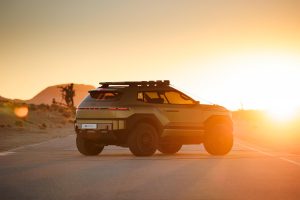 To handle extreme environments, the Crater Concept offers some intriguing, and often playful, design features – like a built-in recovery hook that “performs double duty as a bottle opener,” Hyundai reveals.
To handle extreme environments, the Crater Concept offers some intriguing, and often playful, design features – like a built-in recovery hook that “performs double duty as a bottle opener,” Hyundai reveals.
There are the requisite auxiliary lights on the roof which pick up on the brand’s now-signature parametric pixel lighting theme. And both a fire extinguisher and first aid kit are built into the cabin.
Crater’s side mirrors contain cameras which perform additional duties as flashlights. They can be removed from the vehicle to record “breathtaking views or even record exciting adventures,” explains a Hyundai news release.
Customizable technology
 The unusual dashboard is subtly perforated to let soft lighting pass through. Above the instrument panel, Crater features a full-width head-up display that could serve a variety of simultaneous functions: projecting vehicle data, navigation and more.
The unusual dashboard is subtly perforated to let soft lighting pass through. Above the instrument panel, Crater features a full-width head-up display that could serve a variety of simultaneous functions: projecting vehicle data, navigation and more.
But Crater was designed around a BYOD, or “Bring Your Own Device,” philosophy, which allows a motorist to create “a flexible and customizable digital experience that adapts to various situations and individual user preferences.”
The show car also features technology usable for towing and off-roading, including downhill brake control and trailer brake control.
Powertrain? TBD
 According to Hyundai sources, Crater was built on the same E-GMP platform used for all-electric products like the Ioniq 5 EV. But that was more for convenience than anything else, apparently.
According to Hyundai sources, Crater was built on the same E-GMP platform used for all-electric products like the Ioniq 5 EV. But that was more for convenience than anything else, apparently.
Hyundai would not lift the hood of the show car because it simply hasn’t decided what sort of drivetrain might be used for it were it to go into production. The automaker does have a variety of options in its toolbox, from pure internal combustion engines to all-electric alternatives – and a variety of hybrids in-between.
It’s also working up range-extenders, acknowledged, Parker – much as is the Jeep brand – and for good reason, say proponents of this new technology. The reality is that electric motors are surprisingly well-suited for off-roading. They provide incredible amounts of torque the moment they start spinning, which is great for creeping along a rough trail or rock and log crawling. But EVs have to cope with limited range and the challenge of charging out in the wilderness.
Range-extenders are similar to plug-in hybrids in combining both electric motors and an internal combustion engine under the hood. But, unlike a PHEV, the engine serves only as a generator, providing current should the vehicle’s battery pack run down. The motors are the only source of traction.
An XRT by any other name?
“You could see us” start rolling out more serious off-roaders “in the next couple years,” according to Parker, though the executive cautioned that no hard timetable has yet been set. It is still a work in progress and could take a bit longer.
Indeed, precisely what those vehicles will be capable of is a matter of ongoing internal debate, added design chief Lee. It’s very possible we could see a Hyundai product challenging the likes of a Wrangler or Bronco, but it might find a different strategy. There are opportunities, he explained, for Hyundai to target “many different types of outdoor activities.”
That said, Parker stressed that Hyundai will follow its current marketing strategy once such products come to market. “XRT Pro is the nomenclature we will stick with.”

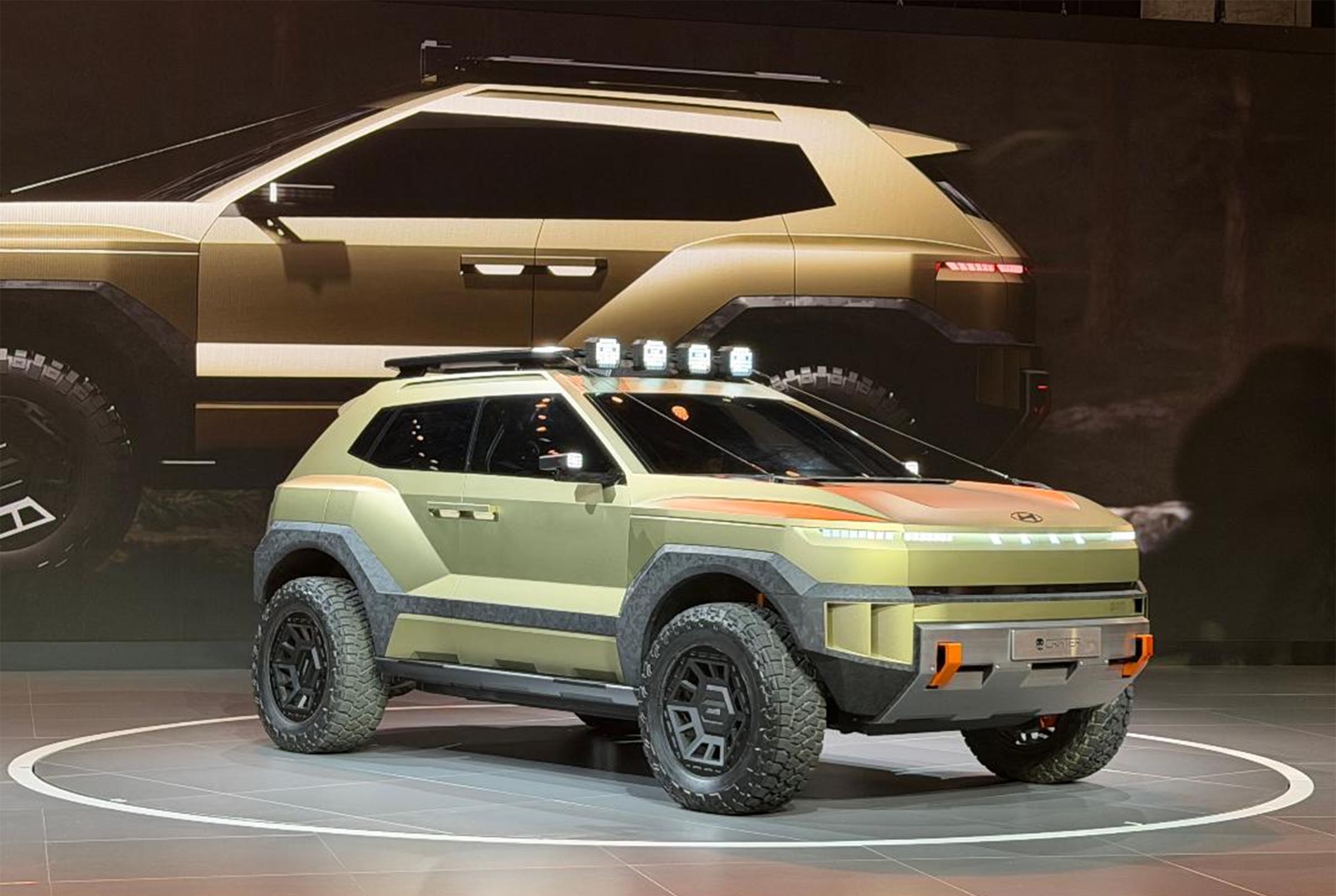

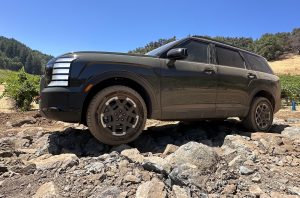
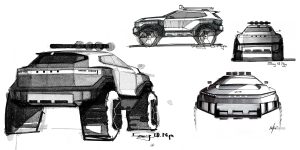
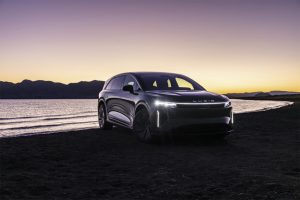

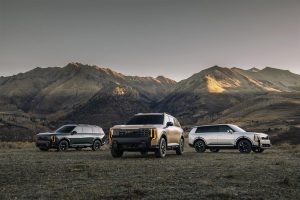
0 Comments